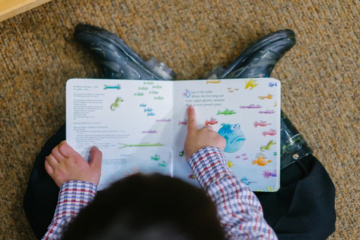The International Baccalaureate (IB) program has gained worldwide recognition for its rigor, holistic approach and emphasis on international-mindedness. If you’re-considering this globally respected curriculum for your child’s education in the academic year 2024-25, you’ve embarked on a journey that fosters intellectual curiosity, intercultural understanding and the necessary skills to thrive in a dynamic world. This blog serves as your guide, navigating the structure of the IB program for 2024-25, its key benefits and how it prepares students for higher education success.

The IB Curriculum- A Journey of Continuous Learning
The IB program is structured across four stages, catering to a wide age range:
● Primary Years Programme (PYP): Designed for children aged 3-11, the PYP emphasizes learning through inquiry, play and exploration. It focuses on developing essential skills like communication, critical thinking and problem-solving within a transdisciplinary framework.
● Middle Years Programme (MYP): For students aged 11-16, the MYP builds upon the PYP foundation, introducing subject-specific learning while maintaining a focus on interdisciplinary understanding. It encourages critical thinking, self-reflection and global citizenship through its unique approaches like service
learning and the Personal Project.
● International Baccalaureate Diploma Programme (DP): This prestigious two-year program, for students aged 16-19, culminates in the IB Diploma,recognized by universities worldwide. The DP offers a vast array of subjects in six groups, allowing students to tailor their studies to their interests and strengths. It emphasizes critical thinking, independent learning and research skills through its core components: Theory of Knowledge (TOK), Extended Essay (EE) and Creativity, Activity, Service (CAS).
● Career-related Programme (CP): Introduced in 2020, the CP is an alternative to the DP, combining academic subjects with career-related learning. It offers a unique blend of theoretical and practical knowledge, preparing students for entry into higher education or directly into the workforce.
Advantages of the IB Curriculum for Higher Education
Choosing the IB curriculum offers several advantages for students aiming for higher education:
● Globally recognized: The IB Diploma is recognized by universities worldwide, opening doors to prestigious institutions around the globe. The rigorous curriculum prepares students for the academic demands of university life.
● Holistic development: The IB program goes beyond rote learning, fostering critical thinking, research skills, intercultural understanding and creativity. These attributes are highly sought-after by universities and employers alike.
● Subject choice and flexibility: The DP offers a wide range of subjects, allowing students to explore their interests and strengths. The CP’s unique combination of academic and career-related learning caters to diverse learning styles and aspirations.
● Strong foundation for lifelong learning: The IB program cultivates a love for learning and inquiry, preparing students for continued intellectual exploration throughout their lives.
Finding the Right IB School
With over 5,000 IB schools worldwide, choosing the right one is crucial. Consider factors like the school’s location, size, culture and the specific programs offered (PYP, MYP, DP, or CP). Look for schools with experienced IB teachers, well-equipped facilities, and a strong support system for students.
Embarking on the IB Journey
The IB curriculum offers a unique and enriching educational experience that prepares students not only for academic success but also for responsible global citizenship. As you navigate the exciting world of the IB program for the academic year 2024-25,remember that it’s a journey of discovery, intellectual growth, and personal development. With careful planning and the right support system, your child can thrive in this challenging yet rewarding program, unlocking a world of opportunities for their future.


